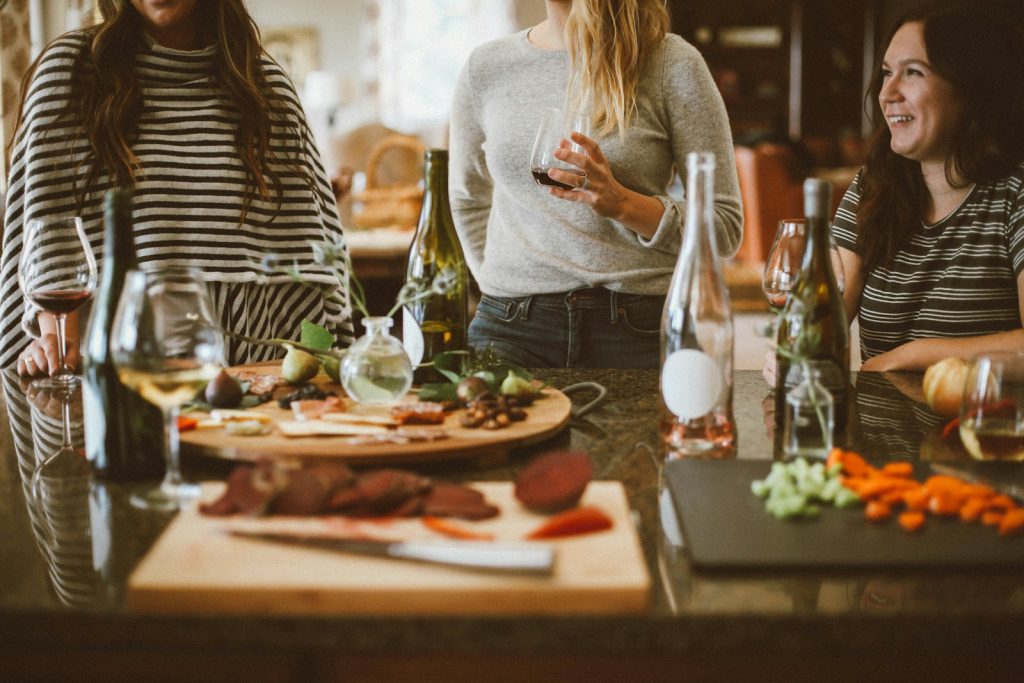Party catering is an essential aspect of event planning that can make or break the success of any gathering. Party catering guide is an introduction to Local Party Catering Services helps you learn the essential tips about any party caterings, Whether you’re hosting a birthday party, a wedding, or a corporate event, understanding the ins and outs of party catering is crucial. In this Introduction to Party Catering, we will explore the different types of party catering, menu planning, essential equipment, presentation tips, hiring a caterer, budgeting, event management, post-event considerations, and the specific catering styles suitable for different types of parties. Let’s dive into the world of party catering and discover how to make your event a memorable one.
Understanding Party Catering
Party catering involves more than just providing food; it’s about creating an enjoyable and seamless dining experience for guests. Catering services are tailored to meet the specific needs and preferences of the client and the event. This includes selecting appropriate menus, ensuring timely delivery and setup, and providing professional service throughout the event.
The first step in party catering is understanding the client’s needs and the nature of the event. This involves discussing the type of event, the number of guests, dietary restrictions, and any specific themes or preferences. For example, a formal corporate event may require a different approach compared to a casual backyard party. Understanding these details helps caterers create a customized plan that aligns with the client’s vision and expectations.

Another crucial aspect is menu planning. The menu should reflect the theme of the event and cater to the tastes and dietary needs of the guests. This includes offering a variety of options, such as appetizers, main courses, desserts, and beverages. Additionally, caterers must ensure that the food is of high quality, fresh, and presented attractively. The goal is to provide a culinary experience that delights the guests and adds to the overall enjoyment of the event.
Types of Party Catering
Full-Service Catering
Full-service catering manages every aspect of the event, from meal preparation and serving to decorations and cleanup. This type of catering is ideal for large, formal events where attention to detail is paramount.
- Pros: Comprehensive service, stress-free for hosts, high-quality presentation.
- Cons: Expensive, requires early booking.
Drop-Off Catering
Drop-off catering involves the caterer delivering the prepared food to the event location without providing additional services such as serving or cleanup.
- Pros: Cost-effective, flexible, minimal interaction required.
- Cons: Less formal, host handles setup and cleanup.
Buffet-Style Catering
Buffet-style catering allows guests to serve themselves from a variety of dishes laid out on a buffet table. It is a popular choice for both casual and formal events.
- Pros: Variety of food options, guests can choose their portions, less formal.
- Cons: Potential for food waste, requires space for setup.
Mobile Catering
Mobile catering involves serving food from a vehicle, cart, or truck. It is commonly used for outdoor events and festivals.
- Pros: Flexible, unique, and engaging for guests.
- Cons: Limited menu options, dependent on weather conditions.
Comparison Table of Catering Types
| Catering Type | Pros | Cons |
|---|---|---|
| Full-Service | Comprehensive service, stress-free | Expensive, requires early booking |
| Drop-Off | Cost-effective, flexible | Less formal, host handles setup and cleanup |
| Buffet-Style | Variety of food options, guest control | Potential for food waste, space needed |
| Mobile | Flexible, unique, engaging | Limited menu, weather-dependent |
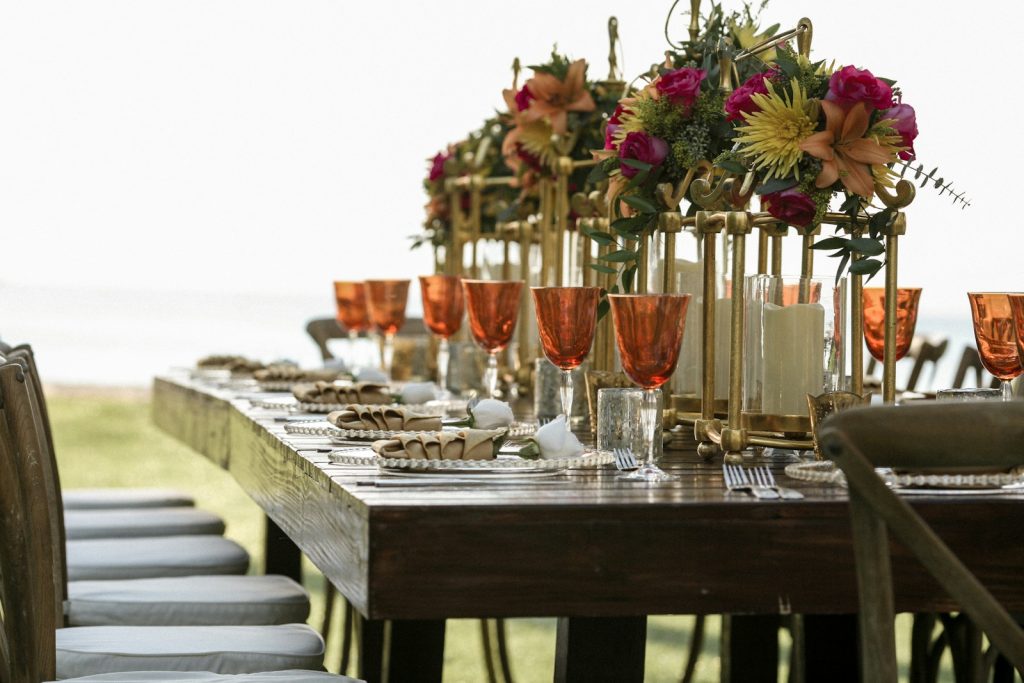
Planning Your Catering Menu
Creating a menu that pleases all guests is a crucial part of party catering. Here are some tips to ensure your menu is a hit:
Dietary Considerations
- Allergies: Always ask guests about any food allergies and plan your menu accordingly.
- Vegetarian/Vegan Options: Include plant-based dishes to cater to vegetarians and vegans.
- Gluten-Free: Offer gluten-free alternatives for guests with gluten intolerance.
Seasonal Menu Planning
Choosing seasonal ingredients ensures freshness and can be cost-effective. For example, a summer menu might include fresh salads, grilled vegetables, and fruit-based desserts.
Ensure a balance of flavors and textures. Include a mix of appetizers, mains, sides, and desserts. Here is an example of a balanced party menu:
| Course | Dish |
|---|---|
| Appetizers | Caprese Skewers, Stuffed Mushrooms |
| Main Course | Grilled Chicken, Vegan Lasagna |
| Sides | Roasted Vegetables, Quinoa Salad |
| Desserts | Chocolate Mousse, Fresh Fruit Tart |
Planning and Coordination
Effective planning and coordination are essential for successful party catering. This involves meticulous attention to detail and efficient organization to ensure everything runs smoothly on the day of the event. One of the first steps is creating a detailed timeline that outlines all the tasks that need to be completed, from initial preparations to final cleanup.
One of the key elements of planning is coordinating with other vendors and service providers. This includes working closely with the event planner, venue staff, and any other vendors involved, such as decorators, florists, and entertainers. Clear communication and collaboration are crucial to ensure that everyone is on the same page and that the event proceeds without any hitches.
Another important aspect is staffing. Having a well-trained and professional staff is vital for delivering high-quality service. This includes chefs, servers, and bartenders who are experienced and capable of handling the specific needs of the event. Proper staffing ensures that the food is prepared and served efficiently, and that guests receive prompt and courteous service throughout the event.
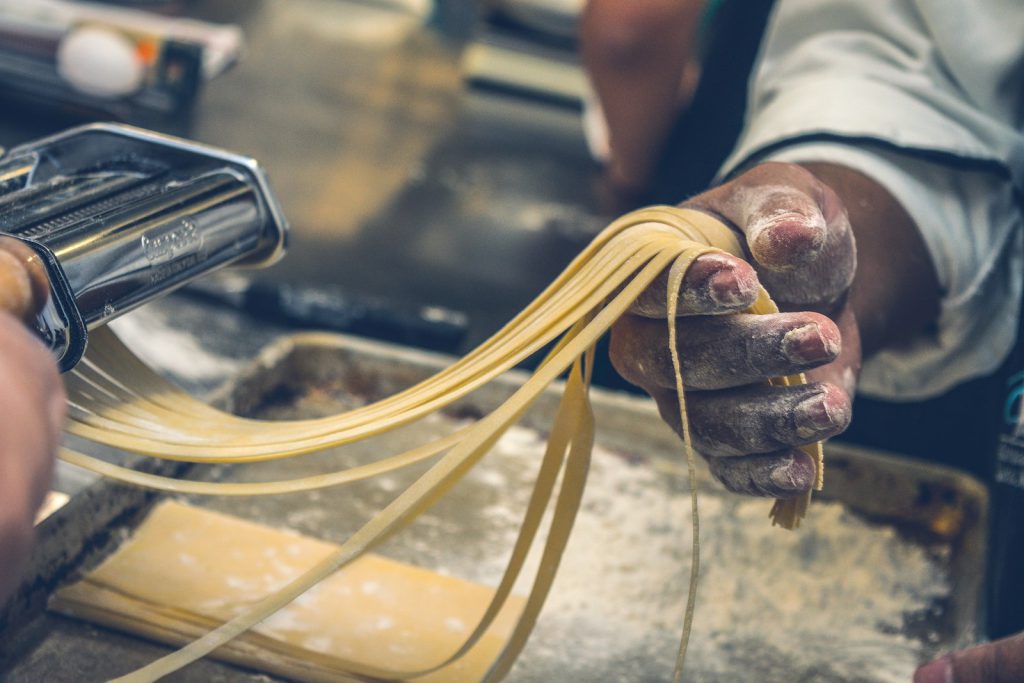
Menu Selection and Customisation
Menu selection is one of the most important components of party catering. The menu should be carefully crafted to suit the theme of the event and the preferences of the guests. It should offer a variety of options to cater to different tastes and dietary requirements. This involves selecting appetizers, main courses, desserts, and beverages that complement each other and create a cohesive dining experience.
Customization is a key factor in menu selection. Caterers should be flexible and willing to accommodate specific requests from clients. This could include creating special dishes for guests with dietary restrictions, such as vegetarian, vegan, gluten-free, or allergy-friendly options. Customization ensures that all guests can enjoy the meal without any concerns.
Presentation is another crucial aspect of menu selection. The way food is presented can greatly enhance the overall dining experience. This involves using attractive plating techniques, garnishes, and decorative elements to make the dishes visually appealing. Attention to detail in presentation shows a level of professionalism and care that guests will appreciate.
Execution and Service
The execution of the catering service on the day of the event is critical to its success. This involves setting up the food stations, ensuring the food is served at the right temperature, and providing attentive service to the guests. Proper execution requires careful planning and coordination to ensure that everything is ready on time and that any potential issues are addressed promptly.
One of the key elements of execution is timing. The food should be served at the right time, ensuring that it is fresh and at the optimal temperature. This requires careful coordination between the kitchen staff and the servers. For example, hot dishes should be served immediately after they are prepared, while cold dishes should be kept chilled until they are ready to be served.
Service is another important aspect of execution. Professional and courteous service can greatly enhance the guest experience. This involves not only serving the food but also attending to the guests’ needs throughout the event. Servers should be attentive, friendly, and responsive to any requests or concerns from the guests. Good service creates a positive and memorable experience for the guests.

Types of Parties and Their Catering Styles
Different types of parties require different catering styles to suit the occasion and guests.
Weddings
Elegant and formal, often with full-service wedding catering in GC, plated dinners, or buffet-style meals featuring a mix of appetizers, mains, and desserts.
Birthday Parties
Flexible catering styles including buffets, BBQs, or themed food stations. Local caterer for Kid’s parties may focus on fun and interactive food like build-your-own sundaes or cupcake decorating stations.
Corporate Events
Professional and polished, usually featuring a mix of buffet and plated options with a focus on accommodating various dietary needs and providing networking-friendly food like canapés and finger foods.
Holiday Parties
Festive and seasonal, often involving a mix of traditional and contemporary dishes, themed decor, and special touches like holiday-specific desserts and beverages.
Graduation Parties
Casual and celebratory, typically featuring BBQ dishes, buffet-style meals, and food stations that cater to a younger crowd with diverse tastes.
Family Reunions
Relaxed and varied, with a focus on large quantities of comfort food that can be shared, often served buffet-style or as a potluck with a caterer providing the main dishes.
Anniversary Parties
Intimate and special, often with a focus on fine dining experiences, customized menus, and elegant presentation.
Baby Showers
Light and celebratory, often featuring a mix of finger foods, small bites, and themed desserts, sometimes with a focus on healthier options.
Themed Parties
Highly customizable to match the theme, involving creative presentation, themed decor, and specialty dishes that reflect the party’s concept.
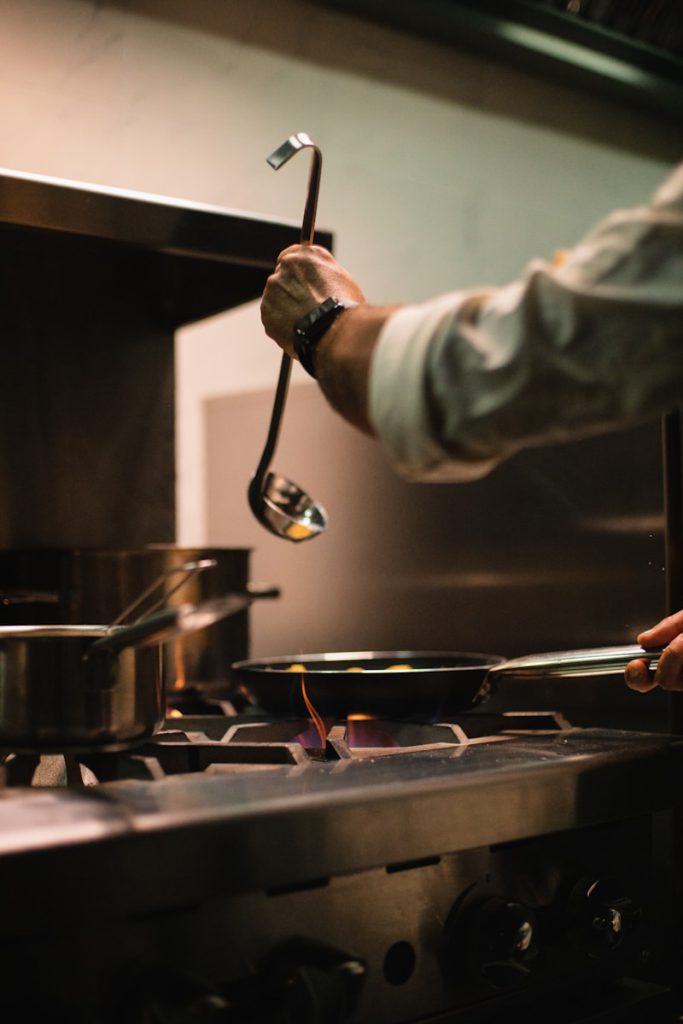
Essential Catering Equipment and Supplies
Having the right equipment is essential for a smooth catering operation. Here’s a list of must-have catering equipment:
Basic Equipment
- Chafing Dishes: Keep food warm throughout the event.
- Serving Utensils: Ensure you have enough spoons, tongs, and ladles.
- Buffet Tables: Sturdy tables to set up your buffet.
Advanced Equipment
- Portable Ovens: For on-site cooking or reheating.
- Coolers: Keep cold dishes and beverages chilled.
- Presentation Platters: Enhance the visual appeal of your dishes.
Renting vs. Buying
Depending on the frequency of your events, you may choose to rent or buy equipment. Renting is cost-effective for occasional events, while buying is better for regular use.
Presentation and Decor
The presentation of food is as important as its taste. Here are some tips to elevate your food presentation:
Color and Layout
- Use a Color Palette: Incorporate vibrant colors using fresh herbs, edible flowers, and colorful vegetables.
- Layering: Layer ingredients to create visual interest.
Themed Decorations
Match the decor to the event theme. For example, use rustic elements for a country-themed party or elegant table settings for a black-tie event.
Props and Signage
- Props: Use decorative items like chalkboards, flowers, and candles to enhance the setup.
- Signage: Label dishes clearly, especially for dietary-specific items.

Hiring a Caterer
Selecting the right caterer is crucial for the success of your event. Here are some factors to consider:
- Experience: Choose a caterer with experience in the type of event you’re hosting.
- Specialization: Ensure they can cater to specific dietary needs and event styles.
Check online reviews and ask for references to gauge the caterer’s reliability and quality of service.
Questions to Ask Potential Caterers
- Can you provide a sample menu?
- How do you handle dietary restrictions?
- What is your pricing structure?
- Do you offer tasting sessions?
Budgeting for Party Catering
Creating a realistic budget is essential for managing costs without compromising quality.
Cost Breakdown
- Food and Beverages: Typically the largest expense.
- Staffing: Includes servers, chefs, and bartenders.
- Rentals: Equipment, tables, chairs, and linens.
- Decorations: Flowers, centerpieces, and other decor items.
Cost-Saving Tips
- Seasonal Ingredients: Use seasonal produce to reduce costs.
- Simple Menus: Focus on quality over quantity.
- DIY Elements: Incorporate some DIY decorations or desserts.
Managing the Event
Effective event management ensures everything runs smoothly on the day of the event.
Coordination
- Timeline: Create a detailed timeline for setup, service, and cleanup.
- Roles: Assign clear roles to each staff member.
Handling Unexpected Issues
- Backup Plans: Have contingency plans for common issues like weather changes or equipment failure.
- Communication: Maintain open communication with your team and the venue.
Post-Event Considerations
After the event, there are several tasks to ensure a complete wrap-up.
Cleanup
- Efficient Cleanup: Ensure the venue is left clean and tidy.
- Waste Management: Properly dispose of or recycle waste.
Feedback
- Collect Feedback: Gather feedback from guests and clients to improve future events.
- Review Performance: Assess the performance of your team and address any areas for improvement.
Planning a Successful Party
Planning a successful party starts with setting clear objectives. Define the purpose of the party, such as celebrating a milestone, hosting a corporate event, or social gathering. This helps in making other decisions, such as the type of menu and the choice of venue. For example, understanding the best practices for different occasions can help tailor your party’s objectives to the needs of the event.
Creating a Guest List and Sending Invitations
Creating a guest list is a crucial step in party planning. It ensures that you have enough food and drink for everyone and helps you manage your budget. Send out invitations well in advance to get a proper headcount. Use online tools to manage RSVPs and dietary preferences. Digital invitations can also help you track responses more efficiently.
Selecting a Suitable Date and Time
Choose a date and time that is convenient for most guests and suits the type of party. Consider the season, day of the week, and time of day to ensure maximum attendance and enjoyment. Weekends are generally more convenient for guests, but if you’re planning a corporate event, a weekday evening might be more appropriate.
Setting a Budget and Sticking to It
Several factors influence catering costs, including the number of guests, menu choices, and additional services like staff and equipment. Here is a table summarizing these factors:
| Factor | Description |
|---|---|
| Number of Guests | More guests mean higher food and service costs. |
| Menu Choices | Exotic dishes and premium ingredients cost more. |
| Additional Services | Includes staff, equipment, and decor. |
Tips for Managing Costs Effectively
Plan the menu according to the budget. Choose seasonal ingredients, and consider buffet-style service to reduce costs. Here are some budget-friendly tips:
- Opt for seasonal produce.
- Use cost-effective proteins like chicken or pork.
- Consider self-service options.
Choosing a Theme and Matching the Catering: Popular Party Themes
Themes such as Hawaiian luau, 1920s Gatsby, or tropical beach can make the party more engaging. Here are some popular themes and matching menu ideas:
- Hawaiian Luau: Poke bowls, grilled pineapple, tropical cocktails.
- 1920s Gatsby: Canapés, champagne, jazz music.
- Tropical Beach: Seafood, fruit platters, rum punch.
Coordinating Food and Decorations with the Theme
Match the menu and decorations to the chosen theme to create a cohesive experience. For a Hawaiian theme, use tropical flowers and bamboo decorations. You can find more creative themed catering ideas to inspire your party planning.
Examples of Themed Party Menus
| Theme | Menu Items |
|---|---|
| Hawaiian Luau | Poke bowls, grilled pineapple, tropical drinks |
| 1920s Gatsby | Canapés, oysters, champagne |
| Tropical Beach | Seafood, fruit platters, rum punch |

Considerations for Indoor vs. Outdoor Venues
Consider weather conditions, space availability, and guest comfort when choosing between indoor and outdoor venues. Indoor venues offer controlled environments, while outdoor venues provide a natural setting. Ensure the venue has enough space for all guests and the necessary facilities for catering.
Tips for Optimising Space and Flow
Arrange tables and food stations to ensure easy movement and access for guests. Use a layout that encourages mingling and interaction. Position food and drink stations in a way that avoids congestion and allows guests to move freely.
Coordinating with Other Vendors
Collaborate with vendors to ensure all aspects of the party align with the overall plan. Clear communication and detailed planning are key. Regularly check in with your vendors to ensure everyone is on the same page and deadlines are met.
Creating a Timeline for Event Day
Develop a timeline for setup, guest arrival, food service, entertainment, and cleanup. Here is a sample timeline:
| Time | Activity |
|---|---|
| 10:00 AM | Venue setup begins |
| 12:00 PM | Vendor arrival and setup |
| 2:00 PM | Guest arrival and welcome drinks |
| 3:00 PM | Main food service begins |
| 5:00 PM | Entertainment starts |
| 7:00 PM | Dessert and coffee service |
| 9:00 PM | Event ends, cleanup begins |
Popular Party Catering Menu Options
Serve small, easy-to-eat appetisers like bruschetta, mini quiches, and skewered meats. These are perfect for mingling guests. Finger foods allow guests to eat comfortably without the need for formal seating.
Use elegant platters and garnishes to enhance presentation. Small, decorative plates and skewers can add a touch of class. Consider using edible flowers or herbs to garnish the platters.
Recipes for Popular Canapés
- Smoked Salmon Canapés: Smoked salmon on a cracker with cream cheese and dill.
- Caprese Skewers: Cherry tomatoes, mozzarella balls, and basil on a skewer with balsamic drizzle.
- Mini Sliders: Small beef patties with cheese, lettuce, and tomato in mini buns.
For more appetizer ideas, explore our finger food and canapé recipes.
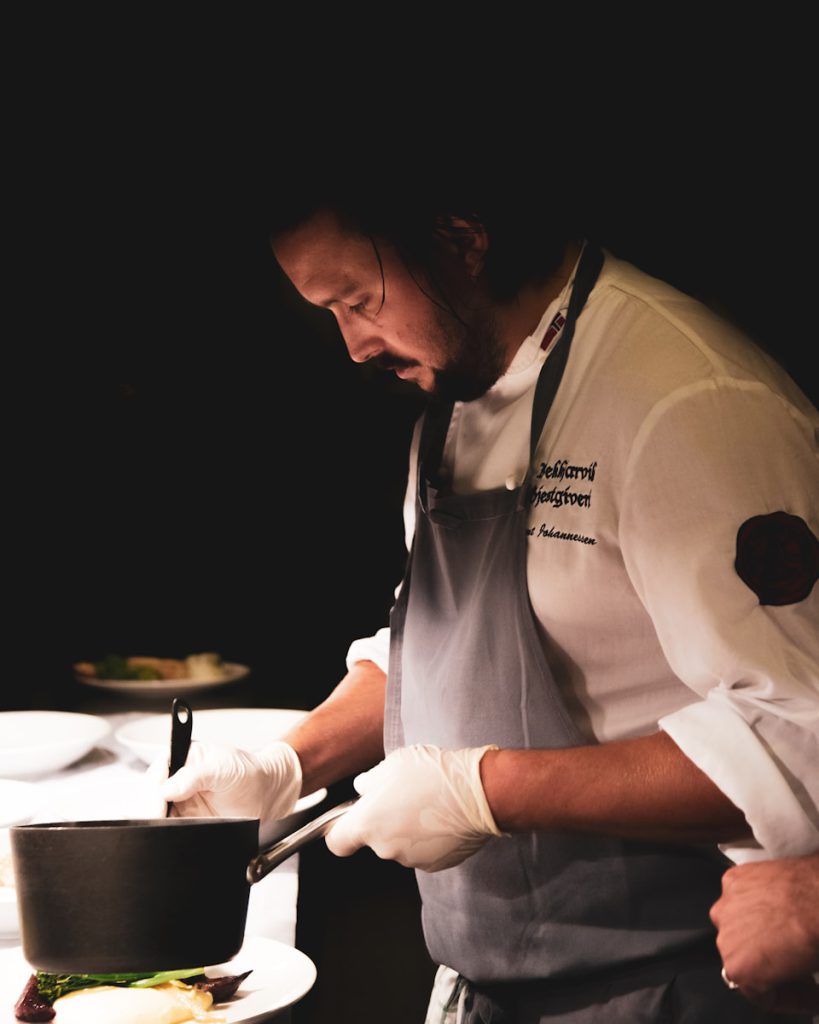
Buffet vs. Plated Service
Buffets offer variety and flexibility, while plated service provides a formal dining experience. Here is a comparison:
| Service Style | Pros | Cons |
|---|---|---|
| Buffet | Variety, guest choice, faster service | Can appear less formal, potential for waste |
| Plated | Formal, controlled portions, elegant | Limited choice, slower service |
Menu Ideas for Buffet Catering
- Salads: Caesar, garden, pasta.
- Main Dishes: Roast chicken, beef stew, vegetarian lasagna.
- Sides: Mashed potatoes, roasted vegetables, rice pilaf.
- Desserts: Fruit salad, brownies, assorted pastries.
Menu Ideas for Plated Service
- Starter: Tomato basil soup, mixed greens salad.
- Main: Grilled salmon with lemon butter, filet mignon with peppercorn sauce.
- Dessert: Chocolate lava cake, tiramisu.
Themed Menu Ideas
Create menus based on themes like Italian, Mexican, or BBQ. Here are some examples:
| Theme | Menu Items |
|---|---|
| Italian | Antipasto platter, spaghetti carbonara, tiramisu |
| Mexican | Tacos, guacamole, churros |
| BBQ | Ribs, coleslaw, cornbread |
Tips for Incorporating Theme into Food Presentation
Use themed decorations and serving ware. For an Italian theme, use checkered tablecloths and wine bottles as decor. For a Mexican theme, use vibrant colors and traditional pottery.
For additional inspiration, check out our themed catering ideas.
Beverage Options and Pairings
Serve mocktails, infused water, and specialty sodas. Here are some ideas:
- Mocktails: Virgin mojito, strawberry lemonade.
- Infused Water: Cucumber mint, lemon berry.
- Specialty Sodas: Root beer, cream soda.
Cocktail and Mocktail Recipes
Include recipes for popular cocktails and their non-alcoholic versions:
- Margarita: Tequila, lime juice, triple sec. Virgin version: lime juice, orange juice, and a splash of agave syrup.
- Mojito: Rum, lime juice, mint leaves, soda water. Virgin version: lime juice, mint leaves, soda water.
Pairing Food with Drinks
Offer pairing suggestions like wine with cheese or pairing beer with BBQ. For example, pairing a robust red wine with steak or a crisp white wine with seafood can enhance the dining experience.
Popular Dessert Options for Parties
Serve desserts like mini cheesecakes, cupcakes, and chocolate fondue. Here are some popular options:
- Mini Cheesecakes: Bite-sized cheesecakes with various toppings.
- Cupcakes: Flavored cupcakes with decorative icing.
- Chocolate Fondue: Melted chocolate with dippable fruits, marshmallows, and pretzels.

Presentation Tips for Dessert Tables
Create an attractive dessert table with varied heights and decorations. Use tiered stands, decorative platters, and themed decor to enhance the presentation. Offer a build-your-own dessert station with toppings and sauces. Some ideas include:
- Sundae Bar: Vanilla and chocolate ice cream with toppings like sprinkles, chocolate sauce, and whipped cream.
- Cupcake Decorating: Plain cupcakes with various icing and toppings for guests to decorate.
- Fruit Parfait Station: Layers of yogurt, granola, and fresh fruits.
Specialty Stations (e.g., Carving Stations, Sushi Bars)
Specialty stations add variety and a unique touch to the event. They provide an interactive experience for guests and can showcase high-quality ingredients and chef skills.
- Carving Station: A chef carving roast beef, turkey, or ham, served with assorted sauces and sides.
- Sushi Bar: Fresh sushi rolls, sashimi, and nigiri prepared by a sushi chef.
- Taco Station: Soft and hard taco shells with various fillings like beef, chicken, and vegetables, along with toppings such as salsa, guacamole, and cheese.
Tips for Setting Up and Managing Stations
- Staffing: Ensure each station is well-staffed with knowledgeable personnel to assist guests.
- Presentation: Use attractive and functional serving ware to enhance the presentation.
- Flow: Arrange stations to avoid bottlenecks and allow easy access for guests.
Budget-Friendly Catering Ideas: Cost-Saving Tips for Party Catering
Opt for in-season produce and budget-friendly proteins. In-season ingredients are often cheaper and fresher.
Making the Most of Seasonal Produce
Use fresh, seasonal ingredients to create flavorful dishes. For example, use summer fruits in desserts and winter vegetables in stews. Incorporate DIY elements like self-serve drink stations to reduce labor costs. Examples include a lemonade stand or a build-your-own sandwich bar.
Affordable Menu Options: Sample Budget-Friendly Menus
Create a menu with affordable dishes like pasta, salads, and grilled chicken. Here are some ideas:
- Starters: Mixed greens salad, garlic bread.
- Main Dishes: Spaghetti with marinara sauce, grilled chicken breasts.
- Sides: Roasted vegetables, mashed potatoes.
- Desserts: Chocolate chip cookies, fruit salad.
Focus on high-quality, simple ingredients and preparation methods. For example, marinate chicken overnight for extra flavor without extra cost.
DIY vs. Professional Catering
- DIY Catering: Can save money but requires more effort and planning. Ideal for smaller, informal gatherings.
- Professional Catering: Offers convenience and expertise but at a higher cost. Suitable for larger or more formal events.
How to Combine DIY and Professional Services
Consider DIY for smaller, informal gatherings where budget is a concern and you have the time and resources to prepare the food. Use professional catering for main dishes and DIY for sides and desserts. This can balance cost and effort.
Maximising Value with Buffet Service
Buffets allow guests to choose their portions and reduce waste. They can also offer a variety of options without the need for individual plating.
Tips for Setting Up a Cost-Effective Buffet
Offer a variety of dishes that are easy to prepare in bulk. Use chafing dishes to keep food warm and ensure smooth service.
Reducing Food Waste by Estimating Food Quantities Accurately
Use online calculators to estimate portions based on guest count. For example, plan for 1.5 servings per guest for buffet-style service. Package leftovers for guests to take home. You can also repurpose leftover ingredients for the next meal or donate to local shelters.
Leveraging Local Vendors and Suppliers
Local sourcing supports the community and often provides fresher ingredients. It can also reduce transportation costs and environmental impact. Include locally produced cheeses, wines, and vegetables in your menu. Partner with local farms and wineries for fresh, high-quality ingredients.
Final Tips
Planning and executing a successful party catering requires careful planning, budgeting, and coordination. Focus on setting clear objectives, managing costs effectively, choosing appropriate themes, and coordinating with vendors.
Stay organized, communicate clearly with vendors, and focus on creating a memorable experience for guests. Make sure to plan ahead and consider all aspects of the event, from setup to cleanup.
Party catering is a multifaceted service that involves careful planning, coordination, and execution to create memorable and enjoyable experiences for guests. From understanding the client’s needs and selecting the right menu to providing professional service and maintaining high standards of hygiene, every aspect of catering plays a crucial role in the success of the event.
By focusing on the key elements of party catering, such as menu selection, presentation, logistics, and client communication, caterers can ensure that their services meet and exceed the expectations of their clients. Staying current with trends and innovations can also help caterers provide fresh and exciting options that set their services apart. Here are some references: Better Homes & Gardens, Food Network, 3



